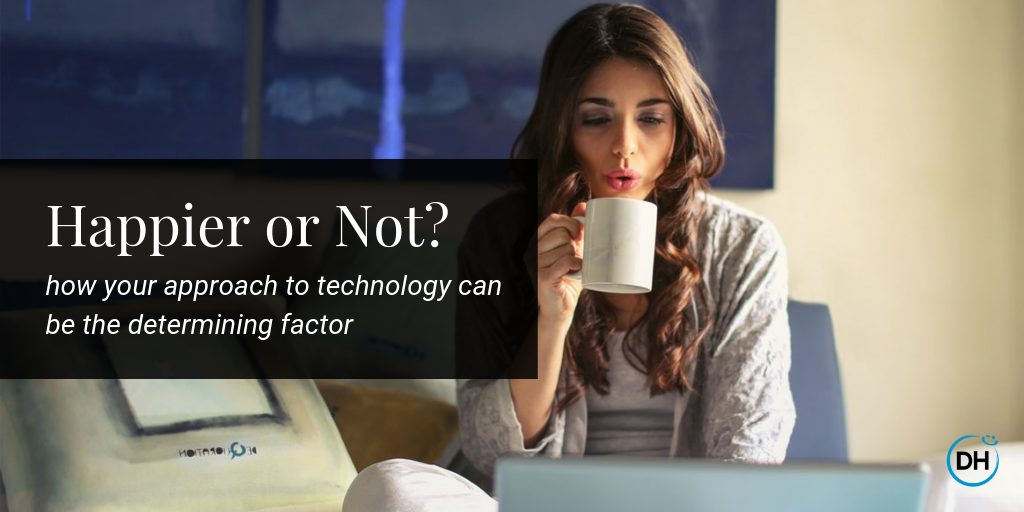
In recent months, I have seen a growing number of posts about how bad technology is for us. Technology is blamed for social isolation, disconnection, and depression.
But I’ve also heard and seen how technology can be used for good — a means to connect, share knowledge, empower, and even save lives.
So which is it: Is technology good for us or bad for us? As Shakespeare once said, “there is nothing either good or bad, but thinking makes it so.” Technology is a tool, a means to an end -- and we get to decide how that story ends.
Technology has rapidly changed the landscape of how we live, work and learn in the Digital Era, but can our happiness keep pace with the speed of innovation?
We are overwhelmed and underprepared to deal with these changes, and as a result, we are struggling to balance our productivity and well-being in a way that sets us up for a future of happiness.
Many people place blame on technology as the cause of stress, too much multi-tasking, and disengagement with those around us. The technology frenzy has left us with questions that undergird the modern family dynamic, that shape workplace efficiency and engagement, and set the baseline for our interactions and communications with friends.
But technology is not our problem. It is a powerful tool that has the potential to increase our productivity, health, education, and happiness. Our problem lies in our utilization of technology.
It’s time for us to take charge of the future by becoming co-creators in the way that technology intersects with our work, our families, and our communities.
The first way that we can do that is by acknowledging the ways that technology has been a positive influence in our lives. The latest research from the field of positive psychology reveals that training our brains to be more positive is not only possible, but it’s also actually essential to striving for your full potential.
Why? Because when your brain is positive, it receives a boost of dopamine, which turns on the learning centers in the brain and makes you able to see more possibilities in your environment. In fact, a positive brain has been linked to:
Our brains receive 11 million bits of information every second but can only process 40 bits at any given time. Thanks to the latest technology, you have a say in what information you consume. We now have the tools to train our brains to scan the world for the positive, trumping our genes and environment to reach our full potential.
My book, The Future of Happiness: 5 Modern Strategies for Balancing Productivity and Well-Being in the Digital Era (BenBella, April 2017), validates and advocates for all the good things that technology can bring to our busy lives while providing us with a thoughtful framework on how to set boundaries on when, where, why, and how we use technology to increase our happiness, productivity, and wellness. Here’s a summary of the five strategies that successful individuals can use to not just survive—but to actually thrive—in the Digital Age:
Knowing that technology is here to stay and will continue to evolve in form and function, we need to know how to navigate the future to better balance technology, productivity, and well-being. The Digital Era offers some amazing new ways to brainstorm and collaborate [through crowdsourcing, open-sourcing, upsourcing, and more], so let’s utilize these resources to solve problems that we have never been able to solve before on our own.

Amy Blankson is a happiness expert on the forefront of testing new technologies to foster well-being. Amy’s upcoming book, The Future of Happiness: 5 Modern Strategies for Balancing Productivity and Well-Being in the Digital Era, (BenBella, April, 2017), brings her years of experience in happiness research and consulting to deliver a roadmap for those feeling overwhelmed by the wave of technology. She has a BA from Harvard and a MBA from Yale School of Management. She has been called upon by the likes of Google, NASA, the US Army, and the Xprize Foundation to consult on positive psychology strategies.